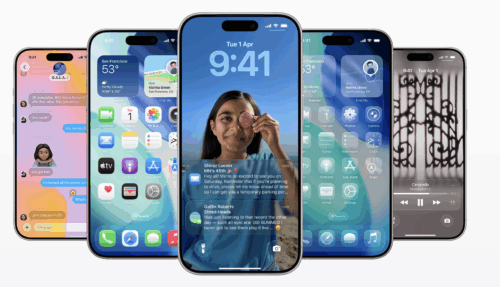
Apple Increasing iPhone Usability Without Network
Apple is reportedly preparing to expand the iPhone’s satellite capabilities beyond emergency use. According to Bloomberg’s Mark Gurman, the company is working on several new satellite-powered features aimed at improving usability when users are outside cellular or Wi-Fi coverage areas.
Satellite-Powered Maps and Messaging
One of the major updates in development is a version of Apple Maps that will work without network access. This would allow iPhone users to navigate using satellite connections, even in remote regions without mobile signals.
Apple also plans to enhance satellite messaging by adding support for sharing photos and media — a leap from the existing text-only satellite features for emergency services and roadside assistance.
Developers to Get Satellite API
Apple is reportedly developing a satellite API for app developers. This would allow third-party apps to connect directly via satellite, making it easier to extend offline usability to more services.
Adventure, travel, and outdoor tracking apps could benefit the most, enabling users to share location updates, routes, or SOS alerts from remote regions without a traditional network.
Improved Satellite Connection Experience
Apple also wants to make satellite connections easier to use. Currently, iPhone users must point their device toward the sky for a stable link. In the future, Apple aims to make connections work more naturally, even when the phone isn’t perfectly aligned — improving the overall experience for users on the move.
Partnership with Globalstar
Globalstar, Apple’s satellite partner, plays a key role in powering these features. Reports say Apple is helping fund infrastructure upgrades to increase Globalstar’s capacity and ensure wider coverage for future services.
The collaboration already supports Emergency SOS and Roadside Assistance via satellite. With these upgrades, the partnership could expand to mainstream iPhone features like Maps and messaging.
How Other Satellite Phones Compare
Apple isn’t alone in this race. Other brands are also integrating satellite technology into smartphones. Huawei introduced satellite texting in its Mate 60 series in China, while Samsung is reportedly exploring similar technology for future Galaxy models.
Meanwhile, brands like Bullitt and Motorola have launched phones with emergency satellite messaging for select regions. However, Apple’s approach stands out for its integration with existing apps and global satellite infrastructure, which could bring a more seamless experience.
Cost and Availability
Basic satellite services, such as emergency messaging, will remain free for users. However, advanced features like continuous navigation or rich media sharing might come through paid carrier plans or subscriptions.
While Apple has not confirmed any release timeline, analysts expect these satellite-powered upgrades to arrive with future iPhone generations — possibly starting in 2026.
Expanding the iPhone’s Reach
The move signals Apple’s long-term goal to make iPhones usable anywhere on Earth. With hybrid connectivity — combining traditional networks and satellites — Apple could bridge the gap between connected and remote areas.
By doing so, the company not only enhances iPhone’s reliability but also sets the stage for the next era of global mobile communication.
